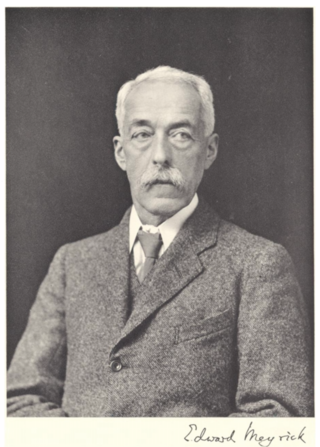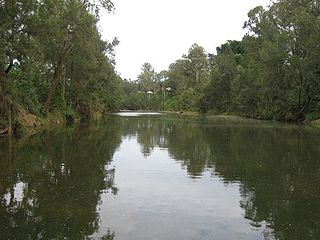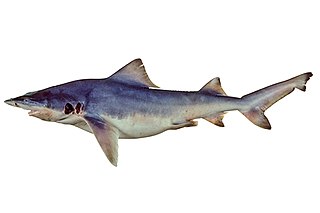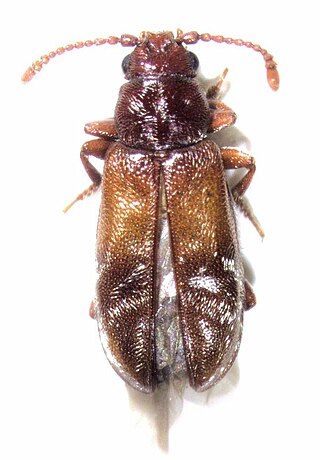
The koala, sometimes called the koala bear, is an arboreal herbivorous marsupial native to Australia. It is the only extant representative of the family Phascolarctidae and its closest living relatives are the wombats. The koala is found in coastal areas of the mainland's eastern and southern regions, inhabiting Queensland, New South Wales, Victoria, and South Australia. It is easily recognisable by its stout, tailless body and large head with round, fluffy ears and large, dark nose. The koala has a body length of 60–85 cm (24–33 in) and weighs 4–15 kg (9–33 lb). Fur colour ranges from silver grey to chocolate brown. Koalas from the northern populations are typically smaller and lighter in colour than their counterparts further south. These populations possibly are separate subspecies, but this is disputed.

The southern common cuscus, also known as Australian cuscus, gray phalanger, and to-ili, is an arboreal marsupial endemic to Australia, southern New Guinea and possibly the Aru Islands. Until recently, it was considered conspecific with P. intercastellanus, and before that also with P. orientalis.
Indo-Pacific is a hypothetical language macrofamily proposed in 1971 by Joseph Greenberg and now believed to be spurious. It grouped together the Papuan languages of New Guinea and Melanesia with the languages of the Andaman Islands and, tentatively, the languages of Tasmania, both of which are remote from New Guinea. The valid cognates Greenberg found turned out to be reflexes of the less extensive Trans–New Guinea family. Recently the Kusunda language, which is generally seen as a language isolate, is also included in the Indo-Pacific proposal. Greenberg did not include "Australian" in his original 1971 proposal.

Edward Meyrick was an English schoolmaster and amateur entomologist. He was an expert on microlepidoptera and some consider him one of the founders of modern microlepidoptera systematics.

The Richmond River is a river situated in the Northern Rivers region of New South Wales, Australia.
The indigenous peoples of Oceania are Aboriginal Australians, Papuans, and Austronesians. These indigenous peoples have a historical continuity with pre-colonial societies that developed on their territories. With the notable exceptions of Australia, New Zealand, Hawaii, New Caledonia, Guam, and Northern Mariana Islands, indigenous peoples make up the majority of the populations of Oceania.
Gajirrawoong, also written Gajirrabeng, Gadjerawang, Gadjerong, Gadyerong and Kajirrawung, is an Australian Aboriginal language of the Kimberley region in Western Australia. It is at least endangered and possibly extinct; as of 2004 it was known by only three or four fluent speakers, and in the 2016 Australian Census, there were no recorded speakers using it at home. It is in the Jarrakan language family, and is the language of the Gajirrawoong people.

The northern river shark or New Guinea river shark is a species of requiem shark, in the family Carcharhinidae, found in scattered tidal rivers and associated coastal waters in northern Australia and in Papua New Guinea. This species inhabits areas with poor visibility, soft bottoms, and large tides, with immature sharks ranging into fresh and brackish water. It is similar to other river sharks in having a stocky grey body with a high back, tiny eyes, and broad fins. It measures up to 2.5 m (8.2 ft) long.
The following lists events that happened during 1837 in Australia.
The 1968 VFL Grand Final was an Australian rules football game contested between the Carlton Football Club and Essendon Football Club, held at the Melbourne Cricket Ground on Saturday, 28 September 1968. It was the 71st annual Grand Final of the Victorian Football League, staged to determine the premiers for the 1968 VFL season. The match, attended by a record crowd of 116,828 spectators, was won by Carlton by a margin of 3 points, making it that club's ninth premiership victory, but its first since winning the 1947 VFL Grand Final.
The Kowmung River, a perennial river that is part of the Hawkesbury-Nepean catchment, is located in the Central Tablelands region of New South Wales, Australia.

The Ommatidae are a family of beetles in the suborder Archostemata. The Ommatidae are considered the extant beetle family that has most ancestral characteristics. There are only seven extant species, confined to Australia and South America. However, the geographical distribution was much wider during the Mesozoic spanning across Eurasia and Australia, suggesting that they were widespread on Pangea. So far, over 26 extinct genera containing over 170 species of these beetles have been described. Three extant genera have been assigned to this family: Omma,Tetraphalerus and Beutelius. The family is considered to be a subfamily of Cupedidae by some authors, but have been found to be more closely related to Micromalthidae in molecular phylogenies. A close relationship with Micromalthidae is supported by several morphological characters, including those of the mandibles and male genitalia. Due to their rarity, their ecology is obscure, it is likely that their larvae feed on deadwood.

Cavognathidae is a family of beetles, in the superfamily Cucujoidea. It contains a single genus, Taphropiestes with around a dozen species known from South America, Australia and New Zealand. In Australian and New Zealand species adults and larvae have been found living in bird nests, but their ecology is unclear, but they are possibly scavengers.

The State Herbarium of South Australia, sometimes called the South Australian Herbarium, and having the herbarium code, AD, is located in Adelaide, South Australia. It is one of several State and Commonwealth herbaria in Australia. The Department for Environment and Water is the state agency which is responsible for the Herbarium, but the Board of the Botanic Gardens and State Herbarium is charged with its establishment and maintenance.
Ngura is a disputed and possibly spurious ethnic and language designation of central Australia. The name 'Nura', short for Ngurawarla, means 'empty camp', referring to lands abandoned after a massacre. It is not a language or ethnic designation.

Amanita ananiceps is a species of agaric fungus in the family Amanitaceae native to Australia.

Acanthocnemus nigricans is a species of cleroid beetle, the only species in the genus Acanthocnemus and the family Acanthocnemidae. Originally native to Australia, the species has spread in modern times to numerous parts of the world, including Europe, Africa, India and Southeast Asia. The insects are pyrophilous, congregating around areas of recently burned wood, being attracted to chemicals found in wood smoke. They have specialised infrared receptors located on the thorax close to the head, used to detect heat. Their life cycle is poorly understood, though mating and egg-laying likely occurs within ash. The larvae are possibly saprophagous.

St Mary's Anglican Church is a heritage-listed Anglican church and associated facilities located at 240 Birrell Street, Waverley, in the Waverley Municipality, Sydney, New South Wales, Australia. The church was designed by Edmund Blacket and built between 1863 and 1864. It is very well known and sought after as a place to be married and is popular for funerals. The building is also notable due its pipe organ, designed and built by August Gern. The property is used for ministry by the Anglican Parish of Bondi and Waverley, which is an amalgamation of two previous Parishes ; The first Rector of St Mary’s Waverley, Rev Stanley Mitchell, was a keen Evangelical and although he used traditional Anglican liturgy was “low church” like most of Sydney Diocese. However there has been a long history of more “High” Anglicanism and Anglo Catholic theological underpinnings. Since 2014, the church has returned to a strongly evangelical base while running a very strong traditional 1662 prayer book communion service every Sunday. It also has less traditional al services to accommodate more contemporary congregations.

The Millers Point Post Office is a heritage-listed former post office and office building and now residence at 12 Kent Street, Millers Point, City of Sydney, New South Wales, Australia. It was designed by NSW Government Architect's Office under Walter Liberty Vernon. It was added to the New South Wales State Heritage Register on 23 June 2000.











